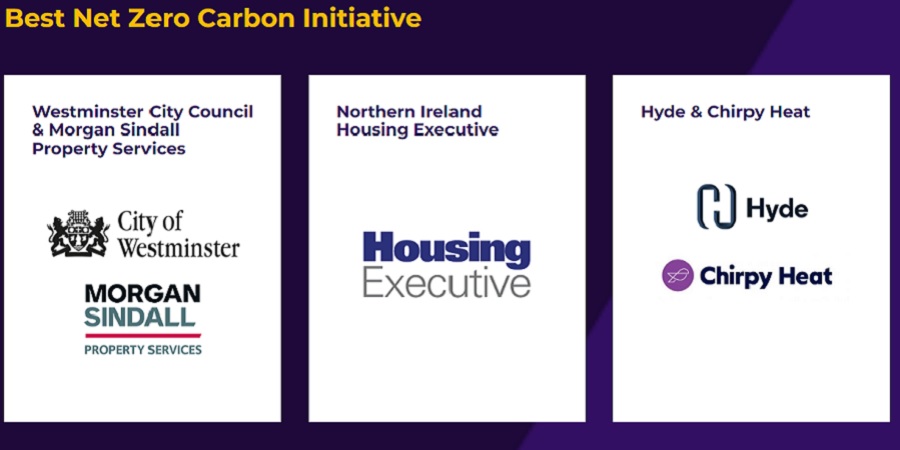Addressing Energy Cost Crisis
With energy costs having doubled what should social landlords be doing to help residents stay warm and healthy?

The tragic case of Awaab Ishak demonstrates the serious impact of living in housing with damp and mould and the effect it can have on people’s health. The Regulator of Social Housing (RSH) wrote to all registered providers expecting them to have a comprehensive understanding of the extent of potential damp and mould issues in their homes and to have systems in place to identify and deal with damp and mould issues. They need to show they are addressing risks to their tenants’ health promptly and effectively.
Reports of damp and mould are likely to increase as residents struggle to afford to heat their homes adequately with higher energy costs. National Energy Action (NEA) estimate that that over 8m households will be in fuel poverty. While the long-term solution is to reduce energy demand by improving the energy efficiency of their existing housing and accelerating plans to meet Government deadlines for Band C and Net Zero Carbon, there are things landlords can do now to help residents reduce their heating bills. With the impact of rising energy costs there is now a moral and economic case for landlords to improve the energy efficiency of their stock to help residents with the rising cost of living by reducing the energy they need to use to keep warm and healthy.
So, what can and should landlords realistically and practically do to help?
This article provides guidance on what landlords can do now and how they can accelerate plans to meet Band C and then Net Zero Carbon. It provides tips on quick wins, shares lessons from the SHDF (Social Housing Decarbonisation Funding) programme and identifies other resources and sources to help.
What can landlords do now?
While there will be pressing demands arising from higher energy costs, even with the Energy Bill Support Scheme, landlords need to plan how to improve the energy efficiency of their stock by developing their long-term improvement plan (see below).
In the meantime, some landlords are helping tenants understand how they can reduce their energy use and energy bills without affecting their health. For example, Orbit has set up an energy help service ‘Your energy, our support’. There may be organisations who can help landlords with this, such as National Energy Action, Groundworks.
However, the most important thing is to develop a comprehensive asset (energy efficiency, carbon reduction and fuel saving) improvement plan for their stock based on the PAS 2035 approach to ensure that all the work they do, including voids and planned maintenance (see below), helps deliver their plan. To develop their plan, they need to:
- Review all their housing stock information to determine any gaps and identify which EPCs and SAP ratings are reliable (measured not cloned).
- Establish their current energy use and carbon footprint (link) to identify which aspects to tackle first and any quick wins.
- Carry out NPV stock appraisal to determine which properties should be improved (retrofitted)
- Develop a roadmap with interim targets and dates.
- Assess which measures should be used for each archetype.
- Develop a costed energy efficiency/decarbonisation asset plan to be included in their asset management programme budget.
- Review their team’s skills and capabilities to identify gaps and assess how best to fill those gaps either in-house or through partnership working and collaboration (supply chain and/or other landlords).
- Identify those homes that will be in fuel poverty due to the higher energy costs.
Having developed their improvement plan they need to get this approved by the Senior Management Team and the Board or Council. This will ensure that the costs are included in the asset management programme.
Top tips for what landlords can do now?
- Engage with residents to understand their concerns about energy costs, keeping warm (are they are worried about using their heating?), and damp and mould.
- Consider providing energy advice to tenants.
- Review all void and planned work against your improvement plan to make sure these works help deliver the plan (revise specifications as necessary to align with plan).
- Install internal insulation to solid walls behind where kitchen and bathrooms are to be replaced and internal wall insulation is scheduled in the improvement plan. Ensure these improvements are accurately recorded in your stock data with EPCs and SAP ratings updated accordingly.
- Identify how many households could be in fuel poverty as a result of higher energy costs and consider making them a priority for energy efficiency improvements, or at least some form of help.
- Use experience with SHDF bids to develop retrofit plans based on accurate, up-to-date stock data in preparation for bidding for future rounds of SHDF and other Government funding schemes (see below).
- Develop long-term partnerships with your supply chain so that you have arrangements in place to deliver the retrofit work to meet the constrained Government funding timescales.
- Ensure you and your supply chain have the necessary skills and experience to deliver retrofit projects. Train existing staff and recruit qualified and experienced staff as needed.
What plans and preparations should landlords be making?
Building on the reviews above, landlords should:
- Fill any gaps in stock information, particularly having accurate (not cloned) EPC and SAP data. There are low-cost techniques to measure air-tightness and actual heat loss in individual properties (see resources below). SHDF requires the measurement of before and after performance (this is also a requirement for ECO4).
- Develop and cost an energy efficiency (fuel saving) improvement/retrofit plan using PAS 2035.
- Ensure they have all the skills and capabilities to deliver their improvement/retrofit plan but not necessarily to recruit in-house (consider collaboration and partnership working).
- Decide if they will bid for future SHDF funding and then start developing their schemes in discussion with their supply chain so that they are ready to submit bids when funding is announced.
- Identify other sources of funding, such as ECO, ESG loans, HNES.
- Landlords with Heat Networks should prepare reviews now for the next HNES funding starting February 2023 (8 bidding windows, 1 each quarter for 2 yrs.). Optimisation should start with a desktop efficiency review (additional funding for this). Improving Heat Network efficiency will reduce residents’ fuel bills. Results from previous HNES optimisation showed what can be achieved in terms of improvements, payback (even stronger with rising energy costs), and reduced carbon emissions.
- Ensure they and their supply chain have effective resident engagement arrangements in place, recruiting more resident liaison officers as necessary and training all staff in energy efficiency awareness.
What are the lessons from SHDF?
Lessons emerging from SHDF Demonstrator and Wave 1 projects can be used to improve bids for and success with future SHDF funding. Successful bids were those that used data-led decisions to develop the project. It is crucial to review existing stock information and data to ensure it is accurate and up-to-date. One of the risks has been differences between real data (what contractors found on site) and modelled data. VFM and a fabric first approach also featured in successful bids. Applying these lessons can also help those landlords that have obtained SHDF Wave 2.1 funding deliver those projects successfully within the tight funding timetables.
In terms of delivery, landlords need to be realistic about their capacity to deliver projects in the funding timeframe. The Government wants to avoid projects underdelivering. To develop successful projects, landlords need to ensure the specification is properly prepared and the team has the technical expertise (skills and experience, especially PAS 2035). The supply chain could help with this. It was also wise to include a buffer to deal with inflation. There are risks for any landlords who are not currently at the procurement stage because they cannot collaborate with their supply chain when developing bids from the early stages. They also face the challenge of finding contractors to deliver within the timescale. Residents should be consulted before work is planned so that they understand what is planned and how it will benefit them. This should continue during the retrofit work to ensure good resident buy-in, something that should be easier with higher energy bills.
What is involved in bidding for SHDF?
Given the short timescales for SHDF bids, landlords should consider developing potential projects and ensuring they have long-term partnerships in place with their supply chain before funding rounds are announced. This preparation should begin with verifying and improving existing stock data, carrying out surveys to fill any gaps. The importance of good data cannot be underestimated. Any retrofit plans should be developed using PAS 2035 and costed with adequate contingency budget to deal with unexpected work and variations from archetypes used for modelling. There was a NHMF Contractor Forum presentation on how to develop, bid for and deliver successful SHDF projects.
What is involved in delivering successful SHDF projects?
Landlords need to have fully developed retrofit plans with properly prepared specifications for all the work in accordance with PAS 2035. They should have experienced contractors in place so that they can commence work as soon as they are awarded funding. They should also begin resident engagement in anticipation of receiving funding so that residents will cooperate with any retrofit work because they understand why it is being done.
What information and resources are available?
To support the SHDF, BEIS provided a free technical assistance facility available to social landlords (Social Housing Retrofit Accelerator website) that finished on 18 November 2022 but may be offered again for future funding. There are also SHDF podcasts.
NHMF:
- Best Practice briefings PAS2035 Q&A, Net zero carbon and existing stock, Fuel Saving Improvements Guide, Damp and mould information to RSH,
- Energy cost crisis Webinar
NHF reports:
- Decarbonisation: a guide for housing associations
- Decarbonising the housing association sector - costs and funding options
- Hard to decarbonise social homes
- Decarbonising heritage and traditional homes
Retrofit for the Future reports:
- Guide to making retrofit work
- Retrofit for the Future data analysis - energy use, comfort levels, running costs and carbon emissions in 37 homes involved in the Retrofit for the Future programme.
- Retrofit for the Future – Innovate UK
- Passivhaus: a route to net zero Retrofit – explains the EnerPHit Passivhaus retrofit standard and how to meet it.
- UK Centre for Moisture in Buildings (UKCMB)
- Retrofit Academy
- Build Test Solutions (one service offering low-cost techniques to measure air-tightness and actual heat loss)
- SHIFT
NHBC Foundation has published an explanatory guide on the different terms being used on Decarbonisation Carbon Jargon: A glossary of carbon and energy related terms for the house-building community (NF92) which may be useful for developing Zero carbon roadmaps and reporting progress.
TCFD mandate - Since 6 April 2022, certain large businesses in the UK have been required to include climate risks in their annual reports. This guide provides the key information about aligning with the Taskforce on Climate-related Disclosures’ (TCFD) recommendations.
Note: This is part of series of Best Practice articles and case studies that the NHMF is producing.
NHMF hosted webinars: “The Social Sector Response to Zero Carbon” on 12 October 2021 and “Meeting the energy cost crisis now” on 6 December 2022. Presentations available at: https://www.nhmf.co.uk/training. Further webinars will be planned for 2023.


